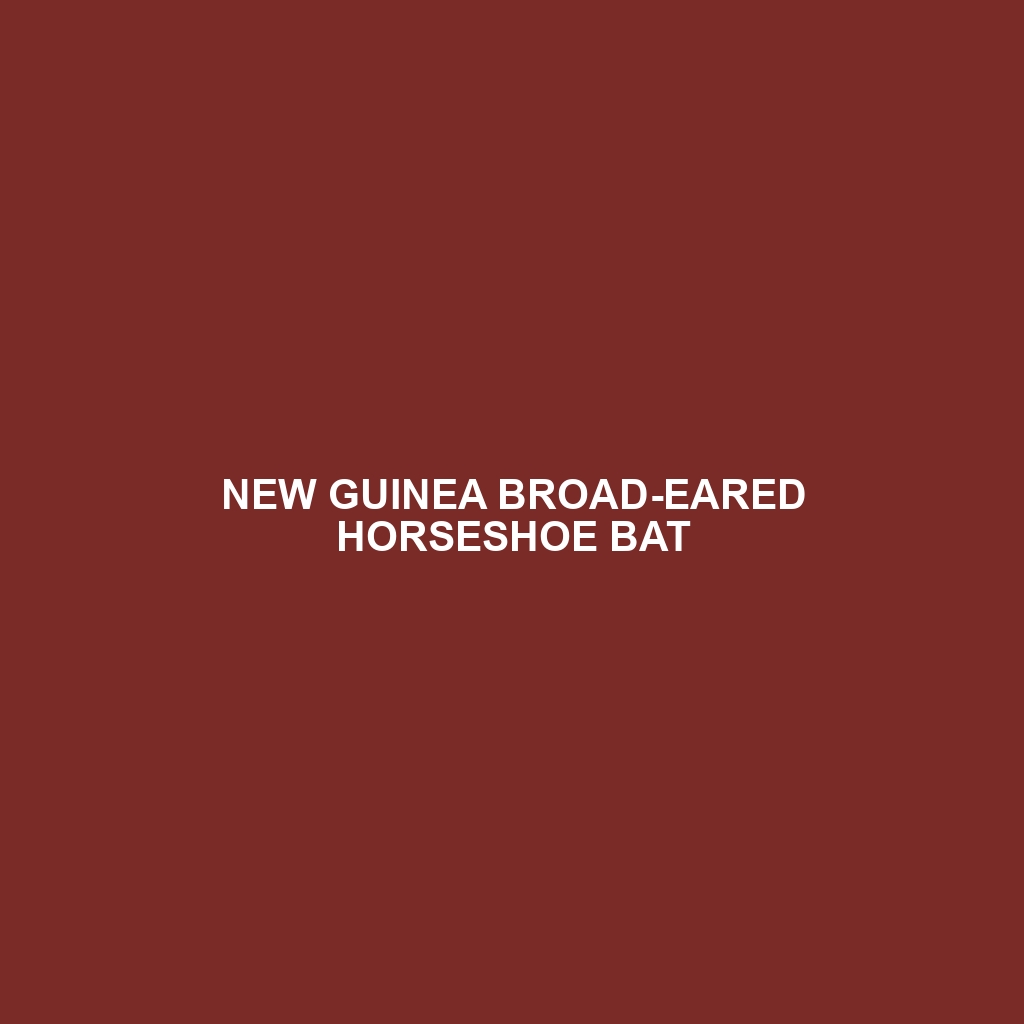Common Name: Mediterranean Horseshoe Bat
Scientific Name: Rhinolophus euryale
Habitat:
The Mediterranean Horseshoe Bat primarily inhabits regions across Southern Europe, particularly in countries like Italy, Greece, and Spain. This bat is often found in Mediterranean scrubland, forests, and around agricultural landscapes. Key environmental conditions for its habitat include well-preserved woodlands, caves, and old buildings, which provide ample roosting opportunities.
Physical Characteristics:
This medium-sized bat typically measures between 4.5 to 5.5 cm in body length, with a wingspan reaching up to 30 cm. The Mediterranean Horseshoe Bat is characterized by its striking reddish-brown fur and a unique horseshoe-shaped nose, which aids in echolocation. Its wings are long and narrow, allowing for agile flight and precise maneuverability in foraging.
Behavior:
The Mediterranean Horseshoe Bat is primarily nocturnal, engaging in echolocative hunting during the night. They are known to roost in large groups, which provides warmth and protection from predators. These bats exhibit fascinating social behaviors, often engaging in vocalizations during mating seasons and social interactions within their colonies.
Diet:
This species primarily feasts on small insects, including moths, beetles, and flies. The Mediterranean Horseshoe Bat’s feeding habits are essential for controlling insect populations, especially within agricultural areas. Their specialized echolocation abilities enable them to detect and capture prey with remarkable accuracy.
Reproduction:
Breeding season for the Mediterranean Horseshoe Bat typically occurs in late spring, with females giving birth to a single pup after a gestation period of around 60 days. These pups are born in communal roosts, where mothers care for their young and teach them essential survival skills. After about eight weeks, the pups start to fly and forage independently.
Conservation Status:
The Mediterranean Horseshoe Bat is currently classified as vulnerable by the International Union for Conservation of Nature (IUCN). Habitat loss, climate change, and human disturbances have significantly impacted its populations. Conservation efforts are crucial to protecting their habitats and ensuring the survival of this species.
Interesting Facts:
Did you know that the Mediterranean Horseshoe Bat can live up to 20 years in the wild? This longevity is attributed to their effective roosting strategies and social structures. Additionally, they play a crucial role in pollination and seed dispersion in their ecosystems, contributing to biodiversity.
Role in Ecosystem:
The Mediterranean Horseshoe Bat is a vital component of its ecosystem. By preying on insects, it helps maintain ecological balance and supports the health of agricultural systems. Furthermore, their presence indicates a healthy environment, making them essential for biodiversity and ecological monitoring.
